When we daydream about sandy shores and crystal-clear waters, we often imagine ourselves basking in the sun on a remote tropical island. But what if I told you that the Northern Hemisphere boasts some of the most breathtaking beaches that could easily compete with the world’s most exotic locations? In this article, we’ll take you on a journey to uncover the answer to the question, “Which beach is located in the Northern Hemisphere?” From the stunning Mediterranean coastline to Northern Europe’s wild and rugged beauty, we’ll show you the incredible range of options Northern Hemisphere beachgoers have at their fingertips.
Which Beach is Located in the Northern Hemisphere?
Many beaches are located in the Northern Hemisphere since most of the world’s landmass and coastlines lie in this hemisphere. Here are a few famous beaches located in the Northern Hemisphere:
1. Grace Bay Beach
2. Lanikai Beach
3. Tulum Beach
4. Navagio Beach
5. El Nido
6. Rhossili Bay
7. Polihale Beach
8. Trunk Bay
9. Cannon Beach
10. Durdle Door
11. Ngapali Beach
12. Ruby Beach
13. Cox’s Bazar
14. Isla Holbox
15. La Playa Escondida
Best Beaches in the Northern Hemisphere 2023
Grace Bay Beach

Grace Bay Beach is a stunning beach located on Providenciales Island in the Turks and Caicos Islands. It’s known for its beautiful white sand and clear turquoise water, making it one of the world’s most beautiful beaches. Grace Bay Beach is a popular spot for snorkeling, scuba diving, and water sports. The beach’s most remarkable feature is its soft, powdery sand and calm, shallow waters, which make it an ideal place for marine enthusiasts. The best time to visit is from December to April when the weather is pleasant, and the water visibility for snorkeling and diving is at its best.
Lanikai Beach

Lanikai Beach is a beautiful spot on the eastern coast of Oahu, Hawaii, USA. It’s known for its soft, powdery sand and clear, shallow waters, making it a popular destination for kayaking and paddleboarding. The Mokulua Islands located offshore add to the picturesque scenery. One unique feature of Lanikai Beach is its tranquility and the view of the twin Mokulua Islands. The best time to visit is during the drier months from May to September when the waters are calm during the summer.
Tulum Beach

Tulum Beach can be found in Tulum, Mexico, on the eastern coast of the Yucatán Peninsula. The beach is famous for its stunning views of the Caribbean Sea and the ancient Mayan ruins. It’s also renowned for its relaxed atmosphere and eco-friendly resorts. What makes Tulum Beach unique is the combination of history and natural beauty. Visitors can explore the Tulum Ruins and then unwind on the beach. The best time to visit is during the dry season, from November to April when the weather is pleasant and the sea is calm for swimming and snorkeling.
Navagio Beach (Shipwreck Beach)

Located in the Ionian Sea, on the island of Zakynthos (Zante) in Greece, is Navagio Beach. This beach is known for its breathtaking cliffs, crystal-clear waters, and a shipwreck (MV Panagiotis) that has been on the beach since 1980. The shipwreck is the main attraction that makes Navagio Beach a popular spot for taking photos. Visitors can access the beach by boat and enjoy the stunning views from above. The ideal time to visit Navagio Beach is between May and September, during the summer when the weather and sea are calm.
El Nido

El Nido is situated on the Philippines’ northern tip of Palawan Island. It is well-known for its stunning karst limestone formations, clear waters, and many hidden beaches and lagoons. El Nido’s natural scenery is impressive, with tall cliffs and secluded coves. It’s an excellent spot for those who enjoy island-hopping and snorkeling. The ideal time to visit El Nido is from November to May, during the dry season. This is when the weather is most favorable for exploring the islands and participating in water activities.
Rhossili Bay

Rhossili Bay is a beautiful beach on the Gower Peninsula in Wales, United Kingdom, in the Northern Hemisphere. The beach is famous for its stunning natural beauty, with a long stretch of golden sand and towering cliffs. Visitors can also see the shipwreck of the Helvetia during low tide. Rhossili Bay is perfect for hiking, surfing, and birdwatching. It’s a popular spot for nature enthusiasts and photographers and is part of an Area of Outstanding Natural Beauty. The best time to visit Rhossili Bay is during the spring and summer months (May to September) when the weather is milder and more suitable for outdoor activities.
Polihale Beach

Polihale Beach is a beautiful remote beach in Kauai, Hawaii, USA. It’s the longest beach in Hawaii and is famous for its stunning sunsets, golden sands, and towering sea cliffs. Compared to other Hawaiian beaches, it’s less crowded and isolated. Visitors can experience a sense of solitude and natural wonder in its wild and untamed landscape. The best time to visit the beach is during the dry season, usually between May and October. During this time, the weather is more predictable, and the road to the beach is more accessible.
Trunk Bay
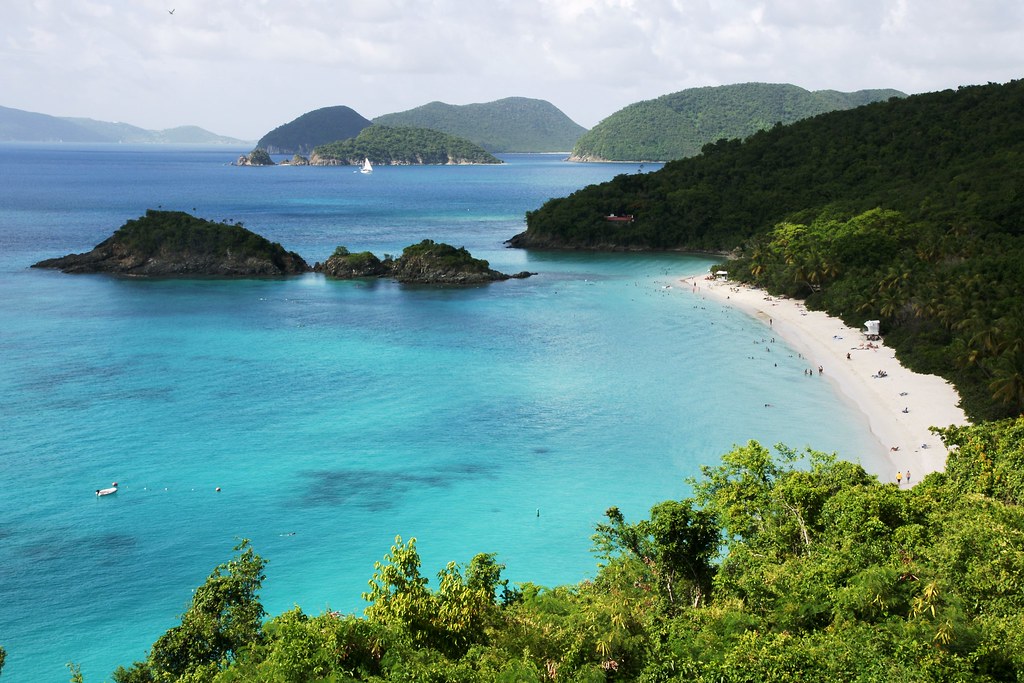
Trunk Bay is a beach on the island of St. John in the U.S. Virgin Islands. It’s known for its clear water, coral reefs, and a trail for snorkeling. This trail is marked and gives visitors a chance to explore marine life. Many people consider Trunk Bay one of the Caribbean’s most beautiful beaches. You can see colorful fish and coral formations on the snorkeling trail. It’s best to visit during the dry season, from December to April, when the water is clearest and best for snorkeling.
Cannon Beach
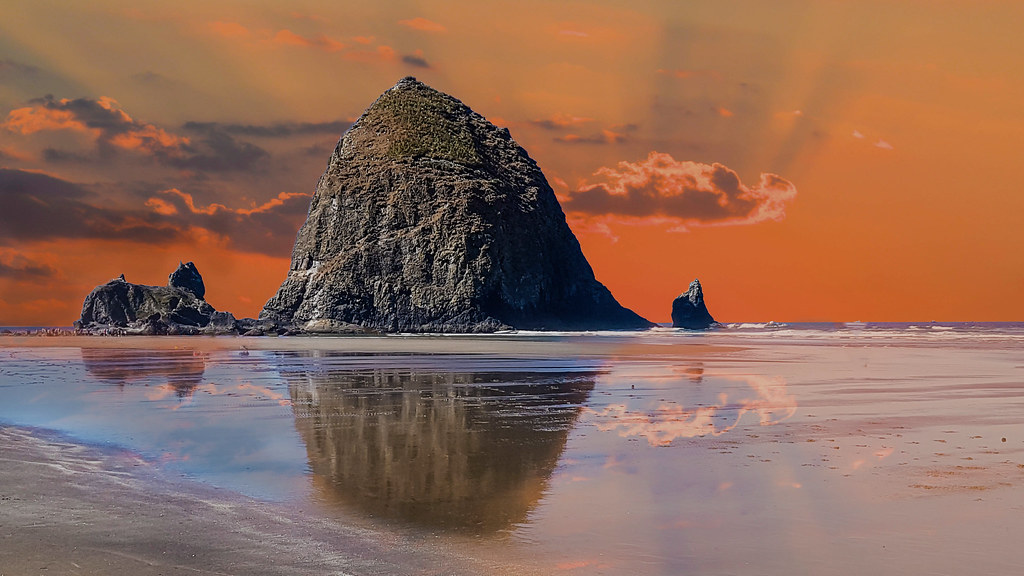
Cannon Beach is a popular destination on the northern coast of Oregon, USA. The beach is known for its iconic sea stacks, especially the “Haystack Rock,” one of the most photographed landmarks on the West Coast of the United States. People also come to Cannon Beach for its artsy and relaxed coastal town vibe. Visitors can explore the towering sea stacks and tide pools around Haystack Rock, which offer unique opportunities to see wildlife. Planning a visit to Cannon Beach during the summer (June to August) is best when the weather is ideal for beach activities and exploring the tide pools.
Durdle Door Beach
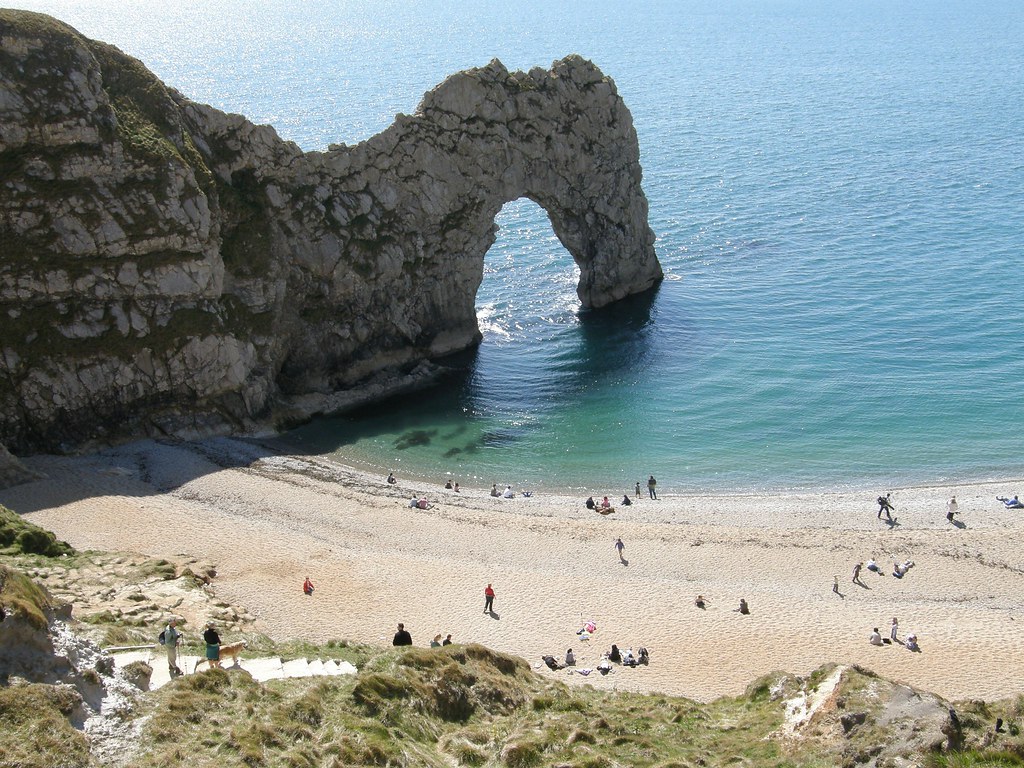
Durdle Door Beach is a beautiful destination on the Jurassic Coast in Dorset, England. Its main attraction is a stunning natural limestone arch, which frames the sea and creates a picturesque backdrop for the beach. The arch is a unique geological formation that makes Durdle Door a distinctive coastal spot, along with the nearby Man O’ War Beach. The best time to visit Durdle Door Beach is between May and September when the weather is milder and more comfortable for outdoor activities.
Ngapali Beach
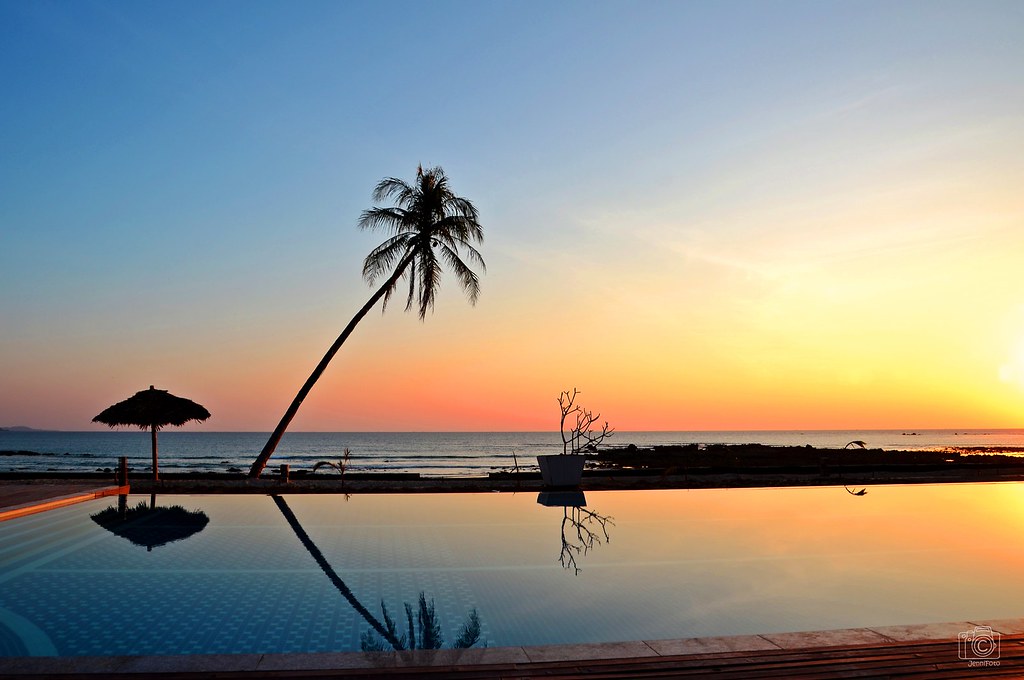
Ngapali Beach is located in Myanmar, on the Bay of Bengal, in the country’s southeastern part. It is famous for its stunning natural beauty, with palm-lined white sandy beaches and clear blue waters. Ngapali Beach is known for its tranquility and is often considered one of the most pristine beaches in Southeast Asia. Ngapali maintains a peaceful and unspoiled atmosphere, unlike many crowded tourist destinations. You can enjoy leisurely walks, traditional fishing villages, and fresh seafood. The best time to visit Ngapali Beach is during the dry season, which typically runs from November to April. During this time, the weather is pleasant, and the sea is calm, making it ideal for swimming and water activities.
Ruby Beach

Ruby Beach is situated in Olympic National Park, Washington, USA, on the Olympic Peninsula. This beach is renowned for its rugged beauty and unique rock formations, including sea stacks and driftwood logs. It’s also known for its colorful sunsets. Ruby Beach is distinctive due to its wild and untamed appearance. The coastline is decorated with tide pools and marine life, making it an excellent spot for nature enthusiasts and photographers. The best time to visit Ruby Beach is during summer when the weather is more favorable. Late spring and early fall can also be good times to avoid the summer crowds.
Cox’s Bazar
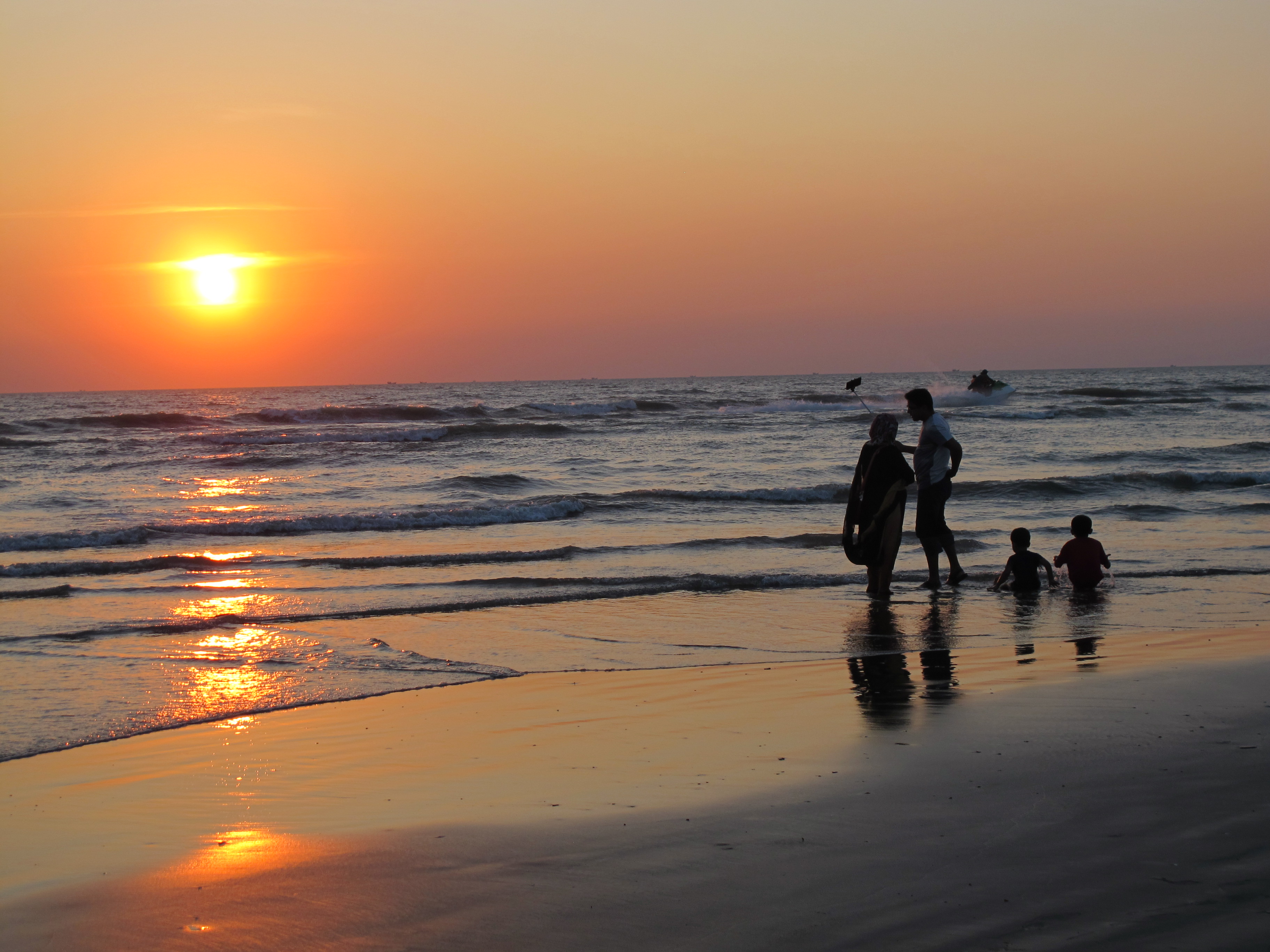
Cox’s Bazar is located in southeastern Bangladesh, along the southeast coastline of the Bay of Bengal. It’s famous for having one of the longest natural sea beaches in the world, stretching for approximately 120 kilometers (75 miles). Cox’s Bazar is a popular tourist destination in Bangladesh. The main attraction here is the vast sandy beach with gentle waves. Visitors can enjoy swimming, beach sports, and local seafood cuisine. The best time to visit Cox’s Bazar is from November to March when the weather is more relaxed and more comfortable for outdoor activities.
Isla Holbox

Isla Holbox is a quiet island located on the northern coast of the Yucatán Peninsula in Mexico. It is well-known for its beautiful and secluded beaches, diverse marine life, and tranquility. Isla Holbox is renowned for its eco-tourism and the chance to swim with whale sharks. Since there are no cars on the island, it has a laid-back atmosphere, making it an excellent place to relax. The ideal time to visit Isla Holbox is from May to September when the weather is warm, and you are likelier to see whale sharks.
La Playa Escondida (The Hidden Beach)

The Hidden Beach, also called La Playa Escondida, is on the Marieta Islands near Puerto Vallarta, Mexico. The beach is famous for its location inside a collapsed volcanic crater, which makes it unique and mysterious. To get there, you can swim or kayak through a tunnel. The surrounding islands have a variety of marine life. It’s best to go from November to April, during the dry season when the sea is calm, and it’s easier to access the beach.
Conclusion
We’ve been on a journey to discover which beach is located in the Northern Hemisphere. We’ve discovered some incredible places with stunning views and relaxing vibes. We hope you’ve enjoyed learning about these hidden gems and feel inspired to visit them. Whether you’re looking for adventure or want to unwind, there’s a Northern Hemisphere beach that’s perfect for you. So grab your sunscreen beach towel and prepare for an unforgettable adventure!

